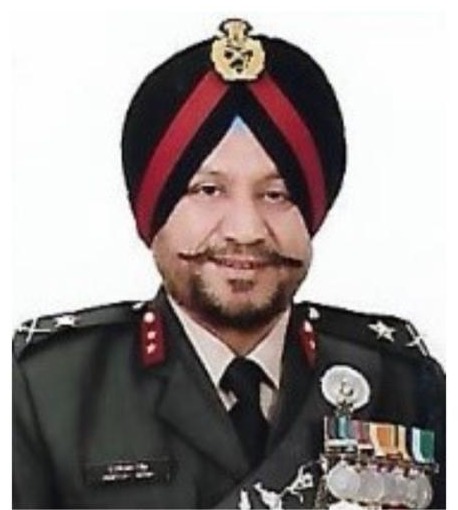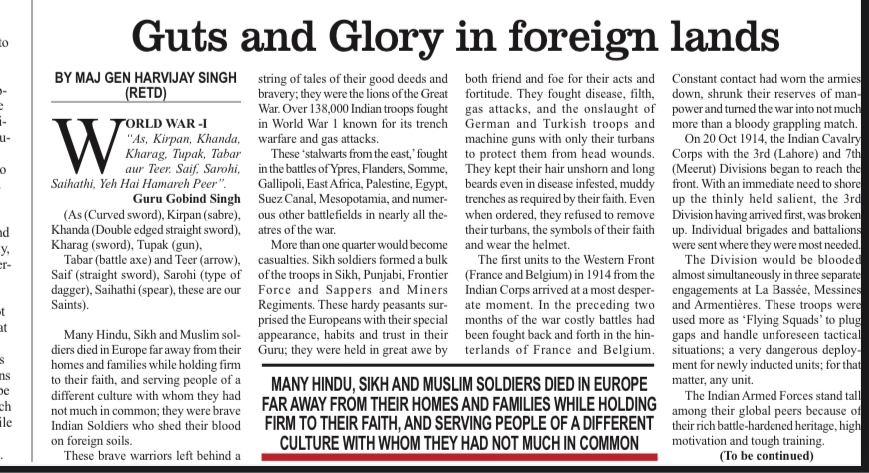
BY MAJ GEN HARVIJAY SINGH (RETD) WORLD WAR -I

“As, Kirpan, Khanda, Kharag, Tupak, Tabar aur Teer. Saif, Sarohi, Saihathi, Yeh Hai Hamareh Peer”. Guru Gobind Singh (As (Curved sword), Kirpan (sabre), Khanda (Double edged straight sword), Kharag (sword), Tupak (gun), Tabar (battle axe) and Teer (arrow), Saif (straight sword), Sarohi (type of dagger), Saihathi (spear), these are our Saints). Many Hindu, Sikh and Muslim sol[1]diers died in Europe far away from their homes and families while holding firm to their faith, and serving people of a different culture with whom they had not much in common; they were brave Indian Soldiers who shed their blood on foreign soils. These brave warriors left behind a string of tales of their good deeds and bravery; they were the lions of the Great War. Over 138,000 Indian troops fought in World War 1 known for its trench warfare and gas attacks. These ‘stalwarts from the east,’ fought in the battles of Ypres, Flanders, Somme, Gallipoli, East Africa, Palestine, Egypt, Suez Canal, Mesopotamia, and numer[1]ous other battlefields in nearly all the[1]atres of the war. More than one quarter would become casualties. Sikh soldiers formed a bulk of the troops in Sikh, Punjabi, Frontier Force and Sappers and Miners Regiments. These hardy peasants sur[1]prised the Europeans with their special appearance, habits and trust in their Guru; they were held in great awe by both friend and foe for their acts and fortitude. They fought disease, filth, gas attacks, and the onslaught of German and Turkish troops and machine guns with only their turbans to protect them from head wounds. They kept their hair unshorn and long beards even in disease infested, muddy trenches as required by their faith. Even when ordered, they refused to remove their turbans, the symbols of their faith and wear the helmet. The first units to the Western Front (France and Belgium) in 1914 from the Indian Corps arrived at a most desper[1]ate moment. In the preceding two months of the war costly battles had been fought back and forth in the hin[1]terlands of France and Belgium. Constant contact had worn the armies down, shrunk their reserves of man[1]power and turned the war into not much more than a bloody grappling match. On 20 Oct 1914, the Indian Cavalry Corps with the 3rd (Lahore) and 7th (Meerut) Divisions began to reach the front. With an immediate need to shore up the thinly held salient, the 3rd Division having arrived first, was broken up. Individual brigades and battalions were sent where they were most needed. The Division would be blooded almost simultaneously in three separate engagements at La Bassée, Messines and Armentières. These troops were used more as ‘Flying Squads’ to plug gaps and handle unforeseen tactical situations; a very dangerous deploy[1]ment for newly inducted units; for that matter, any unit. The Indian Armed Forces stand tall among their global peers because of their rich battle-hardened heritage, high motivation and tough training.


